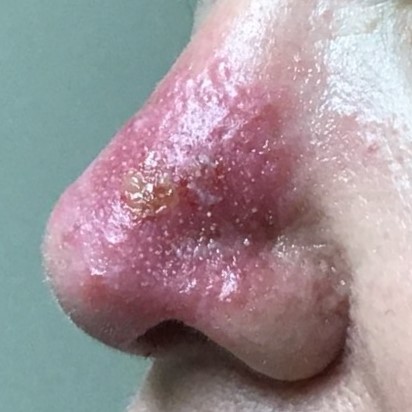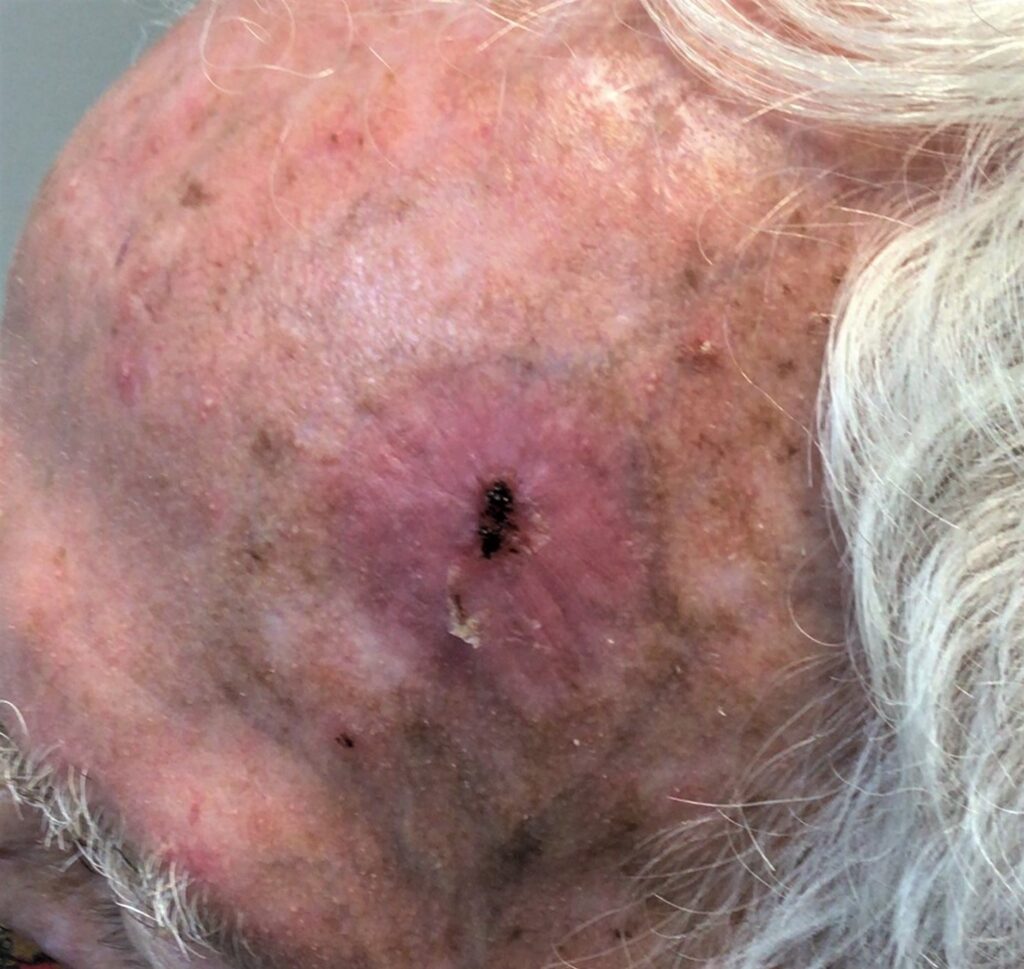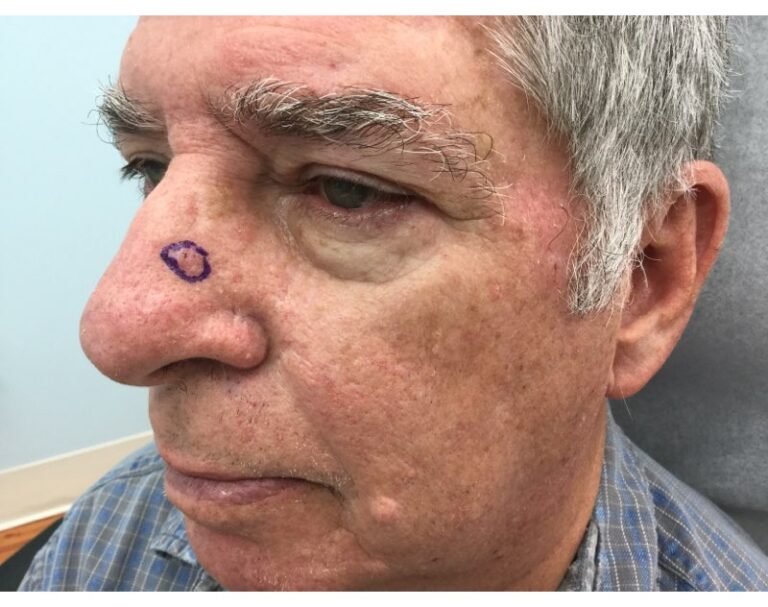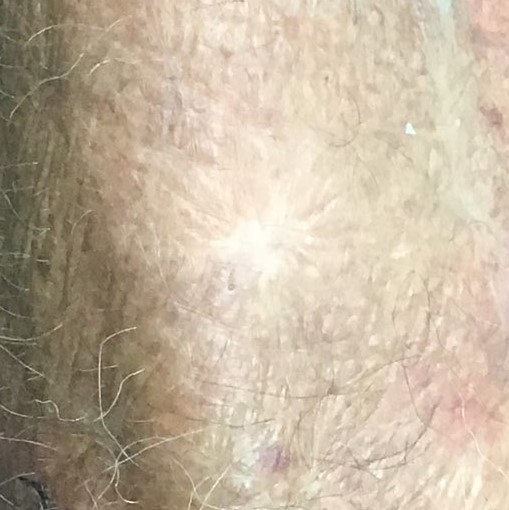
When discussing skin cancer, most people are referring to either basal cell skin cancer or squamous cell skin cancer. Both are common forms of skin cancer, and they are also slow-growing. However, there are several other different types of skin cancer to know about. Here, GentleCure covers the details of the different types of skin cancer so you can be better informed and increase your chances of detecting skin cancer early on should you ever be affected.
Basal Cell Skin Cancer
Basal cell skin cancer—the most common type of skin cancer—is named so because it develops within the basal cell layer of the skin, which is the lowest part of the epidermis. Typically, basal cell skin cancer occurs on areas like the head and neck, which are the most exposed to the sun. This type of cancer grows slowly and does not tend to spread (metastasize) to lymph nodes or other parts of the body. This makes it very curable, especially when detected early on.
Basal cell cancer symptoms may present as a sore that never heals, a reddish or irritated patch of skin, a scar-like area, a small pink growth with a slightly raised and rolled border, or a shiny bump similar to a pimple that may be clear, pink, red, or white.
Squamous Cell Skin Cancer
Squamous cell skin cancer is the second most common among the different types of skin cancer. It develops within the squamous cell layer of the skin, which is the outermost layer. Symptoms of squamous cell skin cancer also appear most often on the areas of skin that get the most sun exposure, such as the neck, ears, eyelids, and face, but it can also develop in other areas including arms, scars, skin ulcers, and the lower extremities. Like with basal cell skin cancer, it is not common for squamous cell skin cancer to spread. However, squamous cell skin cancer is more likely to permeate the fatty tissue beneath the skin.
Melanoma
Melanoma skin cancer forms in the melanocytes, which are the melanin-producing skin cells. Melanoma differs from other types of skin cancer in that it can invade parts of the body that are not exposed to UV radiation, including lower extremities and the soles of feet, or even the eye, giving it a lower survival rate if left untreated. Melanoma is a more complex and more serious skin cancer than those listed above, and may require more aggressive treatment.
Merkel Cell Skin Cancer
This is a very rare, but very serious type of skin cancer that originates in the Merkel cells. Together with the nerve endings, Merkel cells are what give the skin its sensitivity to touch. Merkel cell skin cancer can be more common in areas that see greater sun exposure, such as the face or scalp. Unlike some of the more common skin cancers we’ve covered so far, Merkel cell skin cancer does have a possibility of spreading to the brain, bones, liver, or lungs.
Other Rare Types of Skin Cancer
- Kaposi Sarcoma (KS): This very rare type of skin cancer is caused by herpesvirus 8, and usually presents as a damaged area on the skin, though the skin cancer area may also form in the mouth, lungs, or digestive tract.
- Actinic Keratosis: This is a pre-cancerous growth that, if left untreated, can develop into squamous cell skin cancer. The growths most often present as clusters on an area of skin that was damaged by UV light.
- Lymphoma of the Skin: Also called cutaneous lymphoma, this is a type of non-Hodgkin lymphoma that most commonly forms in the lymph nodes. However, lymphomas can also develop in other lymphoid tissue like the skin, bone marrow, and spleen. Symptoms of this type of skin cancer include a rash or bumps on the skin. Keep in mind, it is an extremely rare type of skin cancer, and these are two very common symptoms that can be seen from a myriad of other skin issues; if you are experiencing these symptoms and are worried, please visit a licensed dermatologist.
- Keratoacanthoma: These are usually non-cancerous growths that will often go away on their own over time. Keratoacanthomas that do continue growing will be treated like squamous cell skin cancer.
- Adenoid Basal Cell Skin Cancer: A rare form of basal cell skin cancer that accounts for only 1.3% of cases.
- Cystic Basal Cell Skin Cancer: An uncommon form of basal cell skin cancer that can present as a blue/black raised spot.
- Fibroepithelioma of Pinkus: A very rare form of basal cell skin cancer that is often mistaken for other types of growths.
- Verrucous Skin Cancer: A squamous cell skin cancer variant that is found on internal body parts.
- Spindle Cell Skin Cancer: A rare variant of squamous cell skin cancer that typically appears in the oral cavity.
- Polypoid Basal Cell Skin Cancer: A rare form that presents much differently than most basal cell skin cancers.
- Bowen’s Disease: A precancerous skin disorder that is also referred to as squamous cell skin cancer in situ. While it is not a form of skin cancer, it can develop into one and should be treated with care.
- Infiltrative Basal Cell Skin Cancer: A unique form of skin cancer that commonly appears in thin white clusters that can be challenging to see.
Ask About Image-Guided SRT Treatment
If you were diagnosed after showing squamous cell or basal cell skin cancer symptoms and are currently researching your treatment options, GentleCure™ invites you to call us at 855-936-4411 to learn more about Image-Guided Superficial Radiotherapy (Image-Guided SRT). The call is free and our goal is to help you make a better-informed treatment decision.
This surgery-free treatment option requires no cutting, leaves no surgical scar, and is highly effective at treating basal cell skin cancer and squamous cell skin cancer. Learn how it works and what to expect during treatment, then take a moment to browse our blog for additional information on skin cancer, treatment options, and more.








